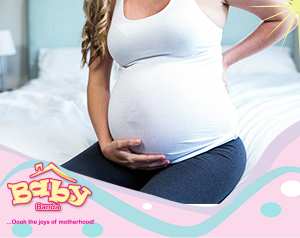Preterm labour is when a woman’s body starts showing signs of giving birth before their due date. In most cases, the labour begins three weeks before the expected delivery date and may result in the baby coming early. This type of labour is often treated as an emergency with many expectant women in Kenya being rushed to the hospital for their safety and that of their unborn baby.
Although the cause of preterm labour cannot be narrowed down to one particular thing, there are some activities or behaviour that increase the risk for an expectant mother. Pregnant women in Kenya are advised to be aware of these common causes of the condition before and during their pregnancy journey.
- Pregnant with multiples – Mums that are carrying twins or more babies are likely to go into labour much earlier than those with a single pregnancy. It is therefore important to be ready and look out for symptoms when pregnant with multiples.
- Pre-existing health conditions – Pregnant Kenyan women that have conditions such as high blood pressure or diabetes are likely to experience preterm labour. When suffering from these conditions, it is important to be in constant communication with your doctor about your health status throughout the pregnancy journey.
- History of preterm labour – If an expectant mum has had preterm labour in earlier pregnancies or the condition is common with close relatives, they have a higher chance of going through it again. It is advisable to check your family history regarding labour and prepare appropriately.
- Smoking when pregnant – It may seem obvious that smoking is harmful to an unborn baby but some mothers continue to engage in it even when expectant. Smoking usually results in preterm labour or a baby that is born underweight. Alcohol intake can also cause preterm labour when combined with harmful drugs.
Signs of preterm labour
The best way to prepare for preterm labour is to be aware of the red-flags commonly associated with the condition. Some of the warning signs that pregnant women in Kenya need to look out for include:
- Backaches that do not seem to ease even after changing positions or walking around to help relieve the pain. Most times, the pain is concentrated on the lower back.
- Abdominal cramps that are can be felt on the lower part of the belly and are usually accompanied by pressure on the pelvic region. In some cases, fluid may start leaking from the vagina.
- Contractions may also begin. The time between them the contractions will get shorter and shorter while the pain intensifies. These contractions differ from those associated with false labour that often eases after changing positions or moving around. Read here for more information on true and false labour https://motherhood101.co.ke/true-false-labour/
- Bleeding from the vagina, which is usually light but can get heavier if not checked out immediately.
In general, if you are experiencing any of the above symptoms and are around 37 weeks or less, you might be in preterm labour and need to see a doctor within the shortest time possible.













